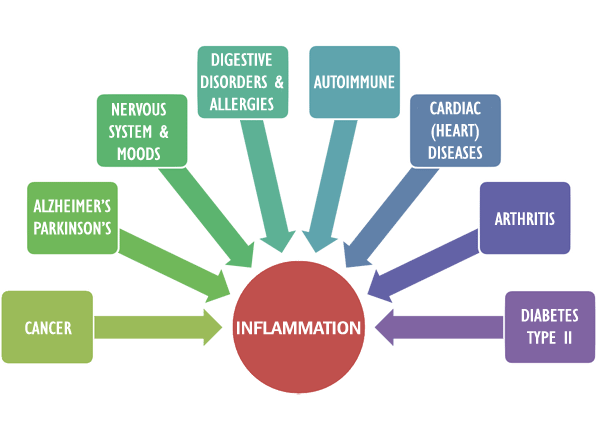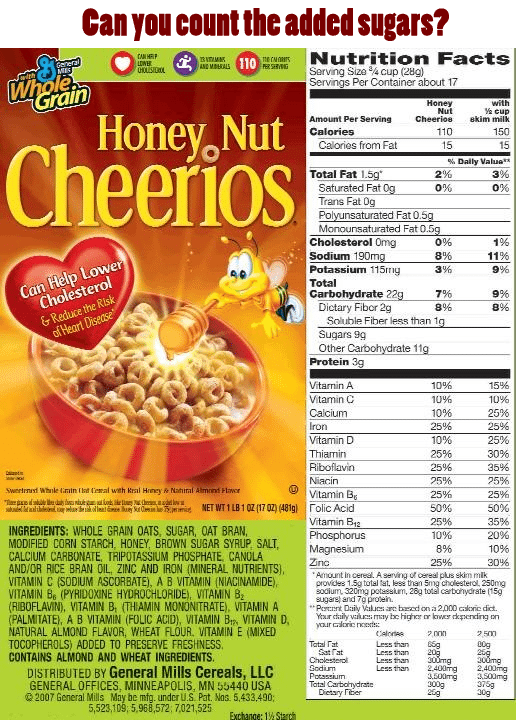
How did inflammation become a problem?
Sugar Industry lies
Marketing the madness: There is just no decency in how junk food companies do their marketing.
Profit is king; even if it sacrifices our children’s health and our own.
It’s what you don’t know that is keeping you from achieving your goals—sadly, keeping you confused is part of the profitable plan.
Lie #1: Low Fat and Fat Free are healthier
There are good studies and then there are … well…
Skyrocketing rates of heart disease during the 1950’s led to studies aimed at understanding the role of various nutrients: fats, sugars, phytosterols, too many calories, too few calories, proteins… By the 1960s, there were two prominent camps:
- John Yudkin believed added sugars increased serum triglyceride levels and heart attack rates;
- Ancel Keys theorized that total fat, saturated fat, and dietary cholesterol caused the problem.
In 1965, the Sugar Research Foundation (SRF) published its review of these studies. They subsequently spent $600 000 ($5.3 million in 2016 dollars) to teach “people who had never had a course in biochemistry… that sugar is what keeps every human being alive and with energy to face our daily problems.”
The war on fat begins: Project 226
A Literature Review on Sugars, Fats, and Heart Disease
In 1965, the Sugar Research Foundation (SRF) secretly funded a review in the New England Journal of Medicine that discounted evidence linking sugar consumption to blood lipid levels and hence coronary heart disease (CHD). The SRF paid two Harvard researchers $6500 ($48,900 in 2016 dollars) for “a review article of the several papers which find some special metabolic peril in sucrose and, in particular, fructose.”
In 1967, McGandy, Hegsted, and Stare published “Dietary Fats, Carbohydrates and Atherosclerotic Disease,” in the New England Journal of Medicine (NEJM). This biased review was directed by the SRF and discounted well-done studies by John Yudkin, Alfredo Lopez, Robert Hodges, and Willard Krehl that showed:
- a positive association between high sucrose (table sugar) consumption and CHD
- sugar caused serum cholesterol and serum triglyceride levels to rise in healthy individuals
- sugar caused serum triglyceride levels to rise in those with hypertriglyceridemia.
- sucrose affected serum cholesterol levels primarily through changes to the intestinal microbiome, and
- fructose, a component of sucrose, affected serum triglyceride levels by increasing fat production in the liver, adipose (fat) tissues, and other organs.
The review article promoted one single randomized controlled trial, conducted by Hegsted, that concluded that reducing dietary cholesterol and substituting polyunsaturated fat for saturated fat substantially improved serum cholesterol levels. Unfortunately, it was a poorly designed study.
Equally unfortunately, the SRF succeeded in burying the truth until Kearns, Schmidt & Glantz analyzed internal industry documents in 2016.
The war on fat continues: Project 259
Burying the animal studies linking sugar to high triglycerides, altered gut health, and heart disease
Between 1967 to 1971 the SRF funded research by W.F.R. Pover that found:
- serum triglycerides went up in rats fed a high sugar diet compared with high starch feed (that’s right, sugar is worse than other starch)
- the sugar diet elevated levels of beta-glucuronidase, an enzyme previously associated with bladder cancer in humans
- risk of coronary heart disease is greater in a high sugar diet compared with the high starch diet
- changes to the gut microbiota may explain the different effects of sucrose and starch on blood lipids
What happened to this research? The sugar industry buried it. All all evidence of harm, including how sugar might cause cancer, was lost to science until Kearns and team blew the whistle just last year.
Industry has a habit of manipulating or burying data that goes against it’s theories and that could lead to unfavorable (to their profits) regulations. While most people are aware of industry wars denying links between cigarette smoking and cancer, psychiatric medications and suicide, pharmaceutical drugs and death or birth defects, we’re still under the belief that sugar is a healthy treat and we need it to fuel our cells, especially our brain.
By 1977, the Dietary Guidelines for America committee made it official: Get the fat out of food.
Since “everyone knows” fat is bad—food labels prominently in BIG BOLD FONT mark items “low-fat,” “reduced fat” or “fat-free.”
The problems?
- fat helps you feel satisfied with your meal—low fat and no fat are not as filling, so you want (and eat) more calories
- low fat doesn’t taste as good as the full-fat versions
- the sugar industry happily added sugar to these otherwise bland foods
- sugar industry profits soar, pharmaceutical company profits soar, insurance premiums and health issues skyrocket
The Bottom Line: Fat has been unscientifically demonized and replaced with sugar. Despite the known dangers of added sugar, it is everywhere.

Lie #2. Hidden Sugar: Food Labels Lie (sort of)
Even if you are one of the few who read ingredient lists before making a purchase, food manufacturers still disguise what’s really in the box.
The Rule: All ingredients must be listed in descending order by amount. If you see sugar in the first few spots, then you know that the product is loaded with sugar.
And that means…
Food manufacturers use three to four different types of sugar sending each one lower on the list. A food could just have sucrose in the #1 ingredient spot but many consumers are saavy to that. Modern packaged foods now contain rice syrup, high-fructose corn syrup, evaporated cane juice, fruit juice—different names for the exact same thing—sugar.
Some other, often healthier-sounding ingredient, now gets to be number one on the list. Clever. There are 61 different names for sugar.
The Bottom Line: Read the ingredients list. Try to find brands without any added sugar.
Lie #3. Calories per Serving
Is that chocolate bar or soda 1 serving or 4?
How long will you stay full on that ¾ cup bowl of cereal (make sure to measure)?
The labels says “only 100 calories per serving.”
But those X-Treme Gulps (52 oz.) and Team Gulps (128 ounces—one gallon—of soda) are just under 20 servings (not that you would ever do that).
The Bottom Line: Read the serving size. Is the portion enough?
Lie #4. Fruit Flavored / Fruit Juice Sweetened
What’s in the box or beverage?
Walk down the “juice isle” in the store is there even any juice there anymore? (BTW: the word “grocery” comes from “Grocer” which means a dealer who sells by the gross—that is, in large quantities at discounted retail prices.) Inspect the ingredients on products like Vitamin Water.
Marketing gurus create labels with HUGE TYPESET “made with some-flavor-that-sounds-natural”.
Orange-flavored VitaminWater: Nope, no actual oranges in there. Sweet is coming from sugar and the Orange is coming from artificial chemicals (and no vitamins either—unless you consider synthetics from test tubes are vitamins).
What about fruit juice sweetened?
If you only have two options: 1. the cane or HFCS or corn sugar sweetened, vs. 2. pear juice or white grape juice or apple juice sweetened; take the fruit juice sweetened product. Always. But…
Please make sure you understand these are all sugars!
What about juices and juicing?
Here’s the breakdown for a 12 ounce (350 ml) portion:
- Coca Cola: 140 calories and 40 grams of sugar (10 teaspoons)
- Apple juice: 165 calories and 39 grams of sugar (9.8 teaspoons)
- Juiced celery from a juicer: 148 calories and 42 grams of sugar (10.4 teaspoons)
Liquid calories whether it’s orange juice, apple juice, celery juice, it is still sugar. And it works differently than solid foods since there is no fiber: The sugar is absorbed immediately. Blood sugars rise quickly. As we discussed in last week’s article

Let's Fix It
This might sound depressing, but you are in control:
- There is no pill that solves every pain or problem; let’s create our solution 🙂
- Sugar sweetened beverages are the biggest source of inflammation. Keep your Food and Mood Log and really track you current habits.
- Stop baking or buying sweet treats. If you’ve done that then…
- If it has a label, read the ingredients list.
- If it has an ingredient list, are there added sugars?
If you've made change, pat self on back! (up is up, perfection isn't the goal)
See you in the next section for a vital tool!
